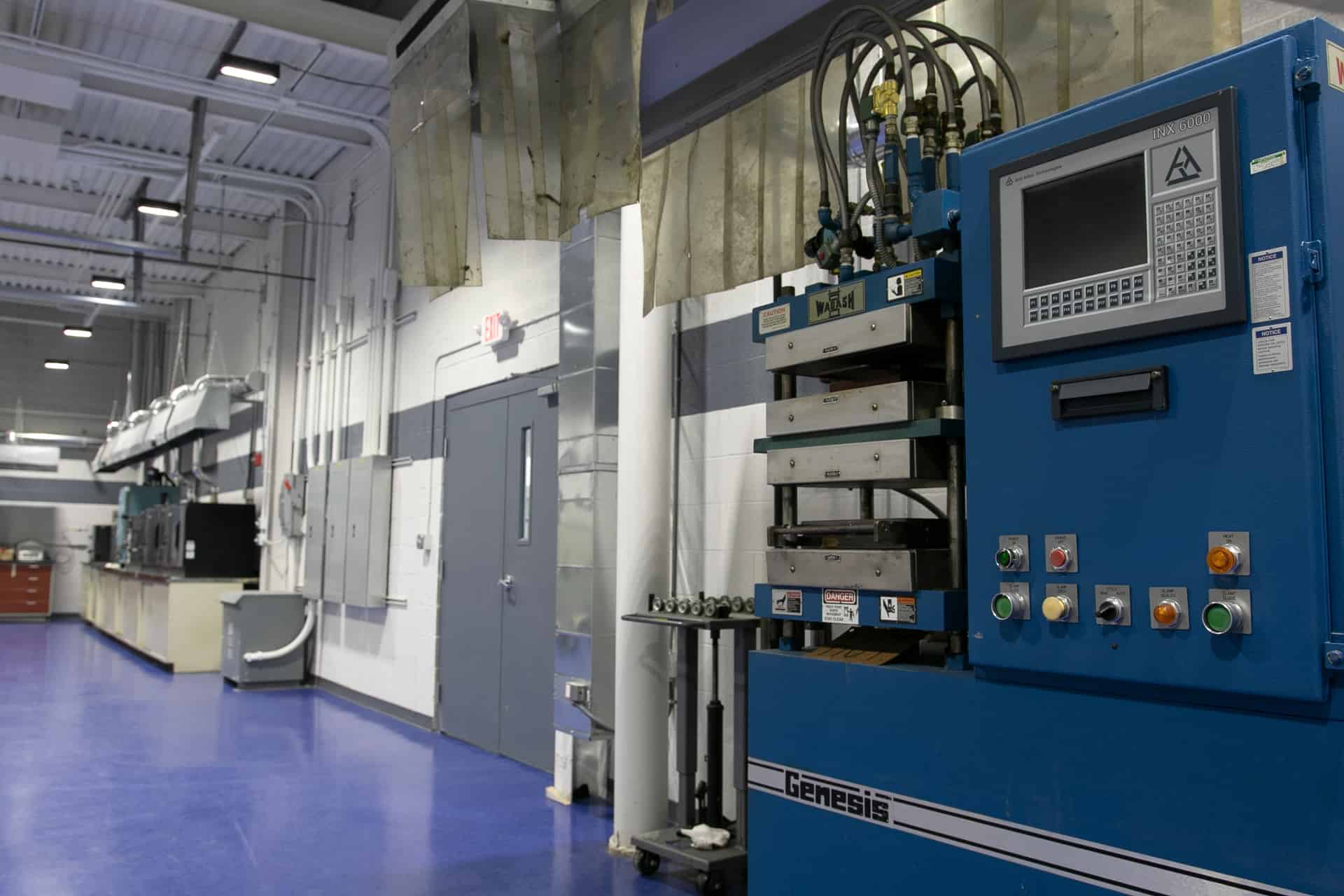
Quality Rubber Testing Equipment & Methods
When you send in a rubber sample for testing and analysis, you want to know that the lab is using the highest quality rubber testing equipment and methods available. With a rubber testing laboratory that uses quality equipment and methods, you can be sure that test results are trustworthy. Quality methods in the lab means quality rubber for your company.
Rubber Testing Equipment You Can Trust…
…Operated by engineers with years of experience, insight, and dedication. That’s what your product needs to reach its next level of performance. ACE’s state-of-the-art rubber testing and processing facilities are equipped with cutting edge technology, designed to help you deliver your best product.
Some of our favorite rubber tests include rubber process analysis, mold flow analysis, UL 94 flammability tests, and our brand new dynamic mechanical analysis tests.
Rubber Process Analyzer
RPA rubber testing can reveal valuable data about your polymer or compound by measuring the viscoelastic properties of polymers.
It can test both pre-vulcanization characteristics and post-cure properties for compounded materials. When we test your rubber, we take measurements before, during, and after cure.
With this information, we can determine precise information about the polymer or compound’s processability, cure speed, cure characteristics, and behavior of the compound at the after-cure.
Our rubber testing lab has two rubber process analyzers. The first, ASTM D6204, quantifies the viscoelastic properties of both uncompounded, raw elastomers and unvulcanized elastomer compounds. You can use the results of these tests for quality control and research and development.
The second machine, the ASTM D6601, establishes a methodology to determine cure characteristics by exposing the sample to various strains and frequencies.
Mold Flow Analysis
We encourage mold flow testing to ensure that the product of each mold is as uniform and high quality as possible. With mold flow analysis, you discover how your polymer compound will behave during injection molding, transfer molding, and compression molding. Mold flow insight leads you to a more consistent, reliable, and high quality production process.
During mold flow testing, we can determine how a material will flow through the mold and into the cavities. With this technology we can study some of the most important molding attributes, like processing temperature, pressure profile, or time-to-fill.
Once we analyze that information, we can make recommendations on how to optimize your mold and streamline your rubber product production.
UL 94 Flame Testing Ozone
Flammability tests are crucial for the quality and safety of your rubber material—whether for tubing, tires, or another application. Our UL 94 test can determine the horizontal burn rate and self extinguishing capacity of a vertical burn.
To check the horizontal burn rate, we expose a series of three material samples to a flame for thirty seconds, and record the behavior, including the duration of burning and the length of burned material.
To measure the self extinguishing capacity of a vertical burn, we perform a similar flame test, but record the material’s burn time, the duration of a glowing burn, and the ignition of material drippings.
Dynamic Mechanical Analysis
Some of our most exciting and most useful tests for rubber polymer and compound analysis are performed with our dynamic mechanical analysis machine.
Dynamic mechanical analysis measures the viscoelasticity behavior of polymers by exposing your sample to sinusoidal stress—stress from sine waves. Then, we measure the strain in the material to compare the ratio of strain to the amount of stress endured by your sample.
To take our analysis a step further, we can vary the temperature of your sample and the frequency of the applied stress to offer you a broad analysis of how your material will perform under a variety of conditions.
Look for Accreditation
Interested parties from across the globe recognize accreditation as a stamp of approval and validity for our rubber testing methods and equipment—which lends a new level of credibility to the rubber you produce, too.
At Ace Products and Consulting, we are ISO/IEC 17025 accredited by ANAB (ANSI National Accreditation Board). ANAB is internationally recognized and assures that labs met regulatory standards and a high level of technical expertise. This means that ACE’s lab has met, and consistently meets, International Accreditation Services standards.
Our ISO/IEC 17025 accreditation means that your test results will always be credible. We consistently calibrate and recalibrate our machines, ensuring accurate and reliable results that you can count on.
What Does Your Rubber Need to Do?
Whatever task your rubber will be faced with when it gets to its end user, we’re ready to put it to the test. At Ace Products and Consulting, we love a challenge. So tell us what your rubber needs to do, and we’ll make sure it performs as expected, if not better. Learn more about our newest laboratory technology.
In the news
A Guide to Cool Roof Systems
What Is a Cool Roof System? Traditionally, commercial and residential buildings alike have roofs made from dark materials, such as shingles and tiles. Dark roofing materials absorb more heat than lighter materials, and that heat is transferred to the building, which...
What Is FDA CFR 21 177.2600 and How Can I be Compliant?
The consumer goods industry is highly regulated, especially regarding food safety. If you’re making any kind of rubber or polymer part for machines that process food, you need to understand and comply with the FDA’s 21 CFR 177.2600 regulations. This standard is often...
